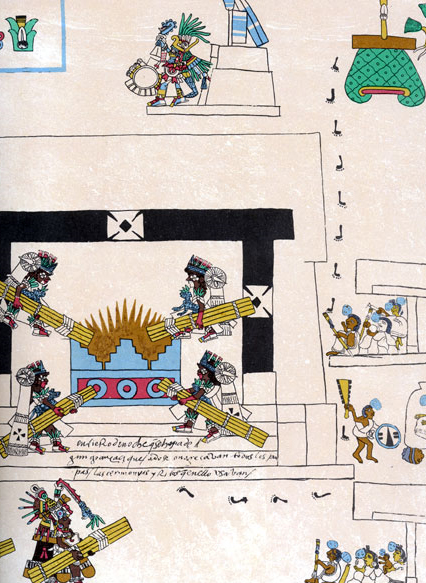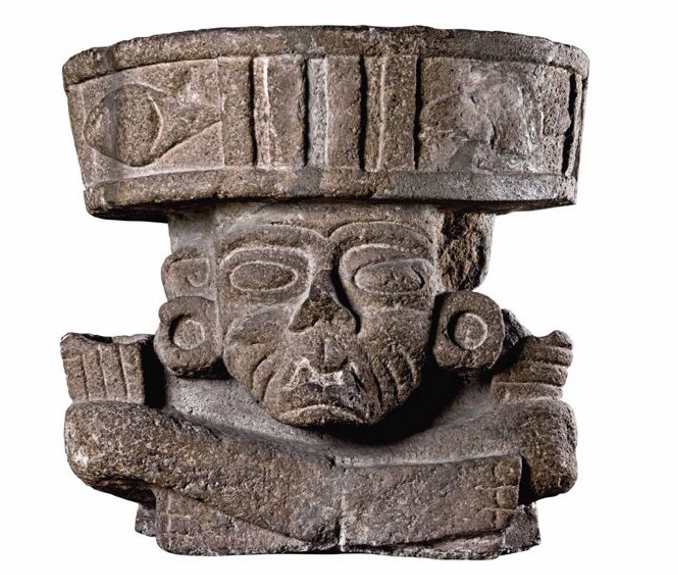The Xiuhmolpilli or Ceremony of the New Fire was a ritual performed the last day of every cycle of the Aztec calendar (52 years) to save the world from destruction. All fires in the Aztec realm were put out and everyone looked towards the summit of the Huixachtla volcano, where priests from the fire cult of Huehueteotl sacrificed a man, placing a firedrill on his chest; the resulting bonfire marked the New Calendar Round. Torches were carried then from the bonfires to the temples in Tenochtitlan and a new Cycle would start with the certainty that the world was safe. The last ceremony of the New Fire was performed in 1507, when became forbidden by the Spanish conquerors.
Huehueteotl, or Old God in Nahuatl, a mesoamerican deity figuring in the pantheons of pre-columbian cultures and associated to fire, was portrayed by the Aztecs as a very old man, hunched over with a wrinkled face and a toothless mouth, who carries a large brazier over his head.




